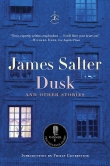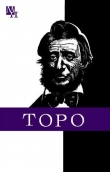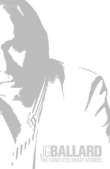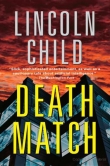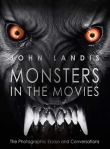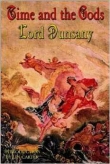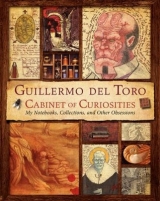
Текст книги "Cabinet of Curiosities: My Notebooks, Collections, and Other Obsessions"
Автор книги: Guillermo del Toro
Соавторы: Marc Scott Zicree
Жанры:
Публицистика
,сообщить о нарушении
Текущая страница: 14 (всего у книги 17 страниц)
HELLBOY II: THE GOLDEN ARMY

Notebook 4, Page 40A, depicting the origins of the root creature.

Puppets of Prince Nuada and Princess Nuala from the film’s opening sequence.

Tooth fairy concept by Wayne Barlowe.

A page from the book Professor Broom (John Hurt) reads to young Hellboy (Montse Ribé), illustrated by Raul Villares.

Hellboy (Ron Perlman) and Abe Sapien (Doug Jones) drink Tecate.

A drawing of Hellboy overshadowed by a member of the Golden Army by Mike Mignola.
“I HAVE CERTAIN PROCLIVITIES,” Guillermo del Toro commented while being interviewed on the show Hollywood Shootout, just after completing Hellboy II: The Golden Army (2008). “I have some fetishes for certain objects and certain things, and I like to explore them again and again.”
Hot on the heels of the critical and financial success of Pan’s Labyrinth, Guillermo dove into his sequel to Hellboy. In truth, the film might have been called Guillermo del Toro’s Greatest Hits, as Guillermo reexamined and revisited virtually every one of his major character, story, design, and thematic elements, from Cronos on. Audiences and critics responded with widespread (if not universal) enthusiasm. Hellboy II is an undeniably delightful ride, a wild rush of moments and details burnished to a high sheen by a writer-director drawing on everything he loves and delivering it to his audience with creative relish.
Guillermo says, “I think that Hellboy II is a sister movie to Pan’s Labyrinth in many, many ways, texturally, spiritually.” This occurred as much out of practical necessity as artistic choice, for Guillermo was working on both projects simultaneously. On both, he says, it was “me jamming ideas. Mind you, I’m writing Hellboy II as I’m writing Pan’s Labyrinth. As always, I was multitasking: (a) in order to meet deadlines and (b) because Pan’s Labyrinth had no deadline. I was not making a living on Pan’s Labyrinth, so Hellboy II was sort of sustaining me through Pan’s Labyrinth. The way you’re paid on a script is commencement, delivery of first draft, revisions, and production money. So I essentially lived on the commencement money for a year and a half or more, and I needed to deliver in order to pay quickly mounting debts.”
Immediately upon finishing Pan’s Labyrinth, Guillermo leapt into preproduction on Hellboy II. Although he and his family were living in a suburb of Los Angeles at the time, he found himself shooting everywhere from Spain with Pan’s Labyrinth to Budapest for Hellboy II, and then moving to New Zealand for two years to work on The Hobbit, which he was originally slated to direct. As Guillermo said at the time, “I live like a ventriloquist’s dummy. I fold in a suitcase and I go.”
One thing Hellboy II exudes is confidence, for by now Guillermo felt assured in his instincts and choices, his interests and predilections. As with the first Hellboy, Guillermo brought Hellboy creator Mike Mignola aboard to work on designs and story ideas. Mignola found it a very different experience from the first time around. “The second film was much more a del Toro picture, so a lot of my influence, it’s there but it’s buried under layers of other people’s stuff,” Mignola revealed to Geek’s Guide to the Galaxy. “The Hellboy character in that second picture is so far away from my version of hellboy…. In fact, there was a moment in one of the meetings where I said, ‘well, Hellboy wouldn’t do that.’ And del Toro said, ‘Your Hellboy wouldn’t. Mine would.’”
Despite such boldness, Guillermo had concerns about the logistics for Hellboy II. “It was not a gigantic-budget movie,” he notes. “Hellboy II was eighty-five million bucks. But we tried to make it luxurious and luscious.”
He also had to make it fresh—a daunting challenge, since every fantasy film of the decade, from Harry Potter to Lord of the Rings, was exploring similar terrain. But Guillermo was not intimidated. He searched far and wide for unusual designs that could bring a new inflection to the Celtic-dominated visual language of contemporary fantasy. “We did a very careful study,” he explains. “If you look at Balinese architecture, and then you look at really Nordic, Slavic architecture, if you migrate, you find shapes that echo one another, like curved ceilings, curved rooftops with pointy edges. With Hellboy II, what was fascinating was that, when you start twisting the Celtic knot, and you toy with it, it becomes a Chinese symbol. And if you tweak it a little more, it becomes a Hindu symbol. It is extremely easy to manipulate. There is a very fluid, universal language in the Celtic design that is fascinating, and you can find it in Slavic design. So we tried to explore it and move it away from any sort of rigidity.”
Guillermo adds that in Hellboy II, “I wanted to have a quality that is sensual,” especially in the case of the giant elemental forest god Hellboy kills. “It has the moss on the chest, a lot of leaf foliage, but then, if the tentacle moves, you see the substrata. It feels like a juicy vegetable, translucent. It was like celery. And we went to great lengths. I think that everything needs to be painterly and sensual, and you need to be aware of the texture. For example, in the corridors of the BPRD [Bureau for Paranormal Research and Defense], even then the concrete surface needs to really feel like concrete.”
In the notebook, Guillermo developed a variety of the striking images found in the film, adding layers and lushness to visions that echo his earlier works. The cracked blue-white marble skin of the vampiric Jesús Gris in Cronos (where, Guillermo admits, “the makeup was not good enough”) morphed into the cracked porcelain head of the ghost-child Santi in Devil’s Backbone and the tombstone-white face of the overlord Damaskinos in Blade II, until finally becoming the delicate, pale visages of Prince Nuada and his sister, Nuala, in Hellboy II. “It was not marble by then,” Guillermo points out. “It was ivory.” Hellboy II’s eyeless Angel of Death, eyes scattered across its wings like stars in the night, recalls not only the Pale Man of Pan’s Labyrinth, but Guillermo’s work on Mephisto’s Bridge and tropes from his beloved symbolist painters, too.

Troll Market street musician concept by Wayne Barlowe.
Johann’s helmet, Liz’s cross, the bestial Mr. Wink, Cathedral Head, the vast gears that fill the elfin throne room, the Golden Army—golems opening like gigantic Cronos devices—are all lovingly rendered in these pages. Most detailed of all is the bustling Troll Market, full of wonders at every turn.
Initially, Guillermo envisioned a trilogy of Hellboy films, but now he thinks a third Hellboy movie won’t happen. If Hellboy II: The Golden Army is Guillermo’s swan song to the franchise, he feels well satisfied. No film is ever perfect, or could ever fully transmit every notion or realize every detail, but with Hellboy II Guillermo is unconcerned, he says, “because I like it so much. I’m in love with what we got. I cannot be objective. I don’t want everybody to agree. I’m just declaring that, for me, it’s one of the most beautiful things I’ve done.”

With Prince Nuada [Luke Goss] and Princess Nuala (Anna Walton), del Toro wanted to create a race of elves with pale, porcelain-like skin, an idea he explored in the notebooks (OPPOSITE), and which resonates with figures from his other films.
 GDT: This [opposite] is a test of the Prince Nuada makeup. Curiously enough, this is me drawing it over an actor. That is Charlie Day, who was one of the two guys I had in mind for the part; the other was Luke Goss. But I tried it on Charlie, and it looked to me like it was too extreme and made the prince too hard. Blood makes the prince exquisite and kind of delicate in a good way.
GDT: This [opposite] is a test of the Prince Nuada makeup. Curiously enough, this is me drawing it over an actor. That is Charlie Day, who was one of the two guys I had in mind for the part; the other was Luke Goss. But I tried it on Charlie, and it looked to me like it was too extreme and made the prince too hard. Blood makes the prince exquisite and kind of delicate in a good way.
MSZ: Again, the continuity of ideas from movie to movie is interesting. You start, with The Devil’s Backbone, to use porcelain skin that cracks, and then you go do this. How did that play into your ideas about how to push elves and fantasy away from the Celtic tradition?
GDT: Well, I think elves should be kick-ass. I love Michael Moorcock’s Elric, and I think elves are really savage warriors. I love the idea of an elf being white, completely white, almost ivory-like. And being creatures of such perfection that they almost shouldn’t be flesh-like.
I’m very proud of Nuada and Nuala, his sister. They’re very beautiful creations, and the idea that when elves die, they turn to stone? I love that idea because I thought then entire fields—battlefields—of elves are now stones, fallen stones. And when they go to Bethmora and the Giant’s Causeway, they see a lot of stones, and I’m just thinking, “Those are fallen elves that fell defending the city.”


NOTEBOOK 4, PAGE 28B
ARABIC!!
Signs indicating the names of the zones in the Troll Market, made of bronze or a similar material and posted on the columns in the tunnel.
–Lights made by sources in the floor and wall
–Why is A.S. so driven to speak with the princess so fast?
–A story that reunites the best moments of M.R., one by one.
–Perhaps the prince’s chamber could be in the TROLL MKT, which would be why the organ grinder’s monkey finds it so easily.
–Sufism is infinite and therefore it’s everywhere and nowhere. It’s inside us but eludes us. It doesn’t exist but it’s always present. It consumes us each day, as if we were petty nourishment for its fires, which are our own.
–Everything that happens strengthens us. Pain, loss (which is nothing but exchange),and death which is but another transformation of our energy.
–C.C. of the rest of the film
• Map Shop in Gold/Greens
• Army Base 1955. Earth tones, military green, and blue and yellow Christmas lights.
• Flashback in shades of Scarlet and gold that don’t regain their intensity until the end of the film.
– Nuada Silverlance
–The magic world’s color code.
– • The T.M. GREENS BLUES GOLD RUST RED.
• Throne Room: GOLD and BLACK
• Bethmora: Ochre/ Gray/Amber
• G.A.C. Golds/Scarlets
• Little hallway Ipepe: Greens/Gold.

NOTEBOOK 4, PAGE 24A
11/8/06 13 Goyas and I’ll throw out the A. Shave. I hope everything turns out well.
11/24/06 War, murder, people killing people they don’t know, those are facts. The barrier between us, that one we can’t break, you and I, that is tragedy. Pure and simple.
–If I move the prologue so that it contains the legend of G.Q., it will make the TROLL MARKET section lighter.
–It’s important for the “Elemental” sequence to feature a large-scale scene and show us “NATURE VS. M”
–They show the king the Elemental grenade and call it “the Bad”
–Placing our faith in organized religion makes beggars of us, starving people pleading for something that they carry, and have always carried, within
–You disgusting–meat sacks of GARBAGE.
HB [?] set.
–THE WORLD—etc.—“Keep up the good work”
The prince does his “cleansing,” little by little the graphics mix together with the graffiti.
Royal markings
–Angel of Death.
plays with lives.
–What is evil if not the work of the virtuous man?
–Perhaps it would be a good idea if Abe “read” the state of Liz’s pregnancy.
–“the immoral and impious straight line” Hunderwasser.
–Solitude and silence are the greatest gifts or the worst punishments.
–“Fairy cottage” or “Storybook architecture popular during the 20’s/30’s

Del Toro’s original idea for the Angel of Death was given a lair by Mike Mignola.
 MSZ: Here we have the Angel of Death, which is such an important figure in Hellboy II, but which can also be traced back to some of your ideas for earlier, unmade projects.
MSZ: Here we have the Angel of Death, which is such an important figure in Hellboy II, but which can also be traced back to some of your ideas for earlier, unmade projects.
GDT: Yeah, the first time I designed the wings of the Angel of Death was for a project called Mephisto’s Bridge, but they were much more elaborate. Every feather had an eye, and each of the eyes in the feathers represented a soul. But the Angel is really rooted in medieval illustrations, which show angels with four wings and eyes in the wings. I just love that image, and I keep it in my head.
And I wanted him to be blind in the sense that he doesn’t care if you choose one path or the other. That gives him a distance. There’s something really, really sinister about the angel that is blind to human suffering, if you will. And we took a long time sculpting the faceplate because I wanted it to feel like a helmet, like a crown, but to give it the texture of real bone. And then we added the asymmetry of the crack—in a character that is all about symmetry, you put in an asymmetrical detail.
MSZ: The faceplate in the final design isn’t something I see reflected in the early drawings.
GDT: No, it literally came out when we were sculpting. I went to visit the makeup effects department, and when we started there was no faceplate. So I took a bunch of Plasticine and I started expanding it into a faceplate. And then Norman Cabrera found the half-moon shape. And we started saying, “Let’s make it bigger,” and it just happened. Sometimes I like “sketching” with clay. I used to sculpt, and am an okay sculptor, so I can get away with it, although not all of the makeup guys like it when I do it.
MSZ: And then the Angel’s teeth remind me of the Pale Man’s.
GDT: That’s exactly right. I like really narrow, small teeth that are long. I think they are very threatening. If the only makeup you use on an actor is just changing the teeth, it’s already super creepy. And it’s very subtle. People don’t read it at first.

The angel’s faceplate, absent in the original design, was developed during the sculpting process.

NOTEBOOK 4, PAGE 24B
–A thing like that, if nature didn’t put it there, then it had a purpose. Somebody did. Somebody wanted it there. there are things in these woods that are older, and meaner than us. They have been here before any of us and hate us.
–The land, the soil of our land calls our name, the rocks and the roots dream of us, await our return. Call our name. Call us back. (True name). The earth of our land dream of us.
–Mirror Helmet for J. TO AVOID REFLECTION/SET. Plus TORSO J to establish it at the start of the film
–That’s a long sword, your highness, overcompenseting?
Arno [?]
4:35 28/11/06
–The prince needs to show his sister ONE room just like things were in their splendor.
“The worst”
–A character called Mr. Knuckles–
–A 1,000 people could save the earth.
–We are a race of shitbags protecting their turf and this young, [?] of shits. How about that??
–December 15, 2006, Stephen King writes in E.W. “…the best Fantasy Film since THE WIZARD OF OZ… you will SEE This movie…” I am happy. They nominated us for the Golden Globes.
–Lynch: It’s about the idea.
–Emilio: It’s about the story.
–Lynch: I’m a classic avant-gardist.
–The community moves slower than the images.
–Lynch: “revealing the sickness…”
–Making films different than media.
–Emilio: You know who counts at 3.06 a.m. in a set. The west—FUCK OFF!!
–Bargen, LAST Name, German. Pronounced like “Bargain”
 MSZ: What is this tentacled armpit for?
MSZ: What is this tentacled armpit for?
GDT: I just found it disturbing—the idea that in a Lovecraftian movie a character could raise their arm and you would see a bunch of tentacles moving. It’s an image I would like to use one day.
Below it is a sketch I did of the council of the elves on both sides of the throne, which ended up in Hellboy II in a different way. It says “The worst” because the prince says, “And for that I will call upon the help of all my people and they will answer. The good, the bad, and the worst.” He’s including “the worst” in his oath, which is the Golden Army. And I was playing with the idea that the train of the king’s robe was also the carpet leading up to the throne. But I didn’t use that either.
MSZ: Let’s talk about this portrait of the king [opposite].
GDT: I like the idea of a creature having ornamental elements that grow out of their body—of ornaments that are biological. You know, when you see a stick insect, it looks like a design. Or if you look at a flower or a vegetable, there is a symmetry and an elegance to the inside that is completely natural, organic. For example, when you slice a tomato, the veining is beautiful.
And this was especially important for the king of the underworld because he is related to trees and all the stuff they don’t have anymore. The idea is that the culture that was given the forests is now living in an abandoned, rusty train station, next to a boiler room. And yet, in their nature, they’re still wood. They’re still the evocation of nature. The elves in Hellboy II are really a displaced tribe. Mignola and I always talked about the prince being like Geronimo, and the elves having received the shittiest reservation thanks to their deal with mankind.

NOTEBOOK 4, PAGE 30A
–URIA HEEP, CHEVY SLYME, Mr SPPITLETOE, NICKELBY, Mr PECKSNIFF, TOM PINCH, Scrooge, PIP, FAVISHAM, PICKWICK, SMIKE, Newman, Maggi GNOTI SEAUTON–
Bouderby.
GHOST
Liz’s invasion of H.B.’s space is reflected by an overwhelming increase in shoes and clothes that he’ll never wear.
–She confronts the public in order to save him.
King Balor.
–The clothes worn by royalty should be full of fabric, with several layers and shapes, too.

NOTEBOOK 4, PAGE 32A
A gnome, seen behind the expo of H.
–Jane Eyre has arrived at Sharpe’s mansion without [?], calm. Blessings and congratulations and good fortune for your future.
–The Crimson Peak mansion “breathes” for the children.
–The Alchemical principle of “dissolve and coagulate” as part of the supreme creation can be applied to the processes of the soul/body.
–Wink’s fight is restricted by the space between the columns of the T.M. and I need to use the vertical space above. The problem is that the roof is made of solid stone too. I’ll ask Steve to build a machine that grinds the flesh and bone of the cats in the T.M./ without blood
–THE NUMINOUS
–Leather cowl.
Angel in Castle in Budapest
–King Balor’s visual “motif” should be a circle of Light in the past and in the present.
–By what mythology do we live by? I believe that TAO, HOMEOPATHY, ALCHEMY and JUNG are the 4 pillars.
“The Bone Crusher.”

Mignola left me this card on the tiny desk in the Hotel Sofitel in Budapest after we finished the storyboards for the Golden Army sequence for the film HBII April 8, 2007. This week Dona, Scott, Mike and David came to discuss the proposal and he took 2 weeks. 3 million dollars in key departments. Ydig was lost and we must kill my beloved Wink in the middle of the film instead of doing it at the end.
NUMINOUS, INSCRUTIBLE, INDIFFERENT, MYSTERIOUS, RECONCILIATION, TRANSMUTATION.
–It is the power of art to reconcile us with life and to seduce us with mistery. Or perhaps the other way ’round
–“The decisive question for man is this: Is he related to something infinite or not?” Jung asked himself this in his writings and man combats the void and Cosmic indifference looking for the answer.

Ron Perlman (Hellboy) and del Toro in front of the final machine on the Troll Market set.
 GDT: Here [opposite] I sketched an angel I saw in one of the castles in Budapest, where we shot a lot of Hellboy II. I came up with the idea of a circle behind the king like the halo of a saint, and I came up with this design for the grinding machine in the Troll Market, which I just love.
GDT: Here [opposite] I sketched an angel I saw in one of the castles in Budapest, where we shot a lot of Hellboy II. I came up with the idea of a circle behind the king like the halo of a saint, and I came up with this design for the grinding machine in the Troll Market, which I just love.
Above is Mike Mignola’s drawing from when he departed Hellboy II in preproduction. He left me this little illustration saying, “Good luck!”

Initially green like the elemental, the Troll Market took on more diverse colors in this keyframe by Francisco Ruiz Velasco (ABOVE), eventually becoming a riot of saturated colors in the final film.
General view of the Troll Market

 GDT: Here [left] I’m trying to portray the Troll Market. I originally thought it would be these crooked places, and you could see small doorways next to giant doorways next to normal doorways, with little staircases next to normal staircases. I wanted to do it all in greens and golds.
GDT: Here [left] I’m trying to portray the Troll Market. I originally thought it would be these crooked places, and you could see small doorways next to giant doorways next to normal doorways, with little staircases next to normal staircases. I wanted to do it all in greens and golds.
MSZ: The market and the elemental [opposite] share the same palette. Originally, was there supposed to be a strong visual link between the two?
GDT: The original idea was that the other world was life, so I wanted to make it green, like nature, or red, like blood. But this is a very early idea. We still have a lot of green, but we eventually made it very lively with a lot of colors. What I did is I started evolving the movie toward a more controlled palette in the human world and an incredibly colorful palette in the fantasy world.
So Hellboy lives in the BPRD, which is essentially steel and concrete, straight lines. When you’re out on the street, everything is blue, greenish but with really cold lines. Then he sees the Troll Market and he goes, “Holy shit, you should see this.” He starts to understand where he belongs. Hellboy’s real life and his true nature are in these places.

NOTEBOOK 4, PAGE 29B
What are you? No, better yet—What am I NOT??
Elemental
Blind
Soft Xenon spotlights at half power, sweeping past the stone columns in the T.M. the whole time.
–ETCHED plaques inscribed with “TROLL” letters on the walls in the T.M. tunnel for the FACELESS CAVE BERSERKER with a lantern.
–A scene in which the victim wakes up with the vampire sucking at his arm, suddenly, without prior warning, like a hold, blind leech.
–Window from Polanski’s The Tenant in the T.M.
–Scene in which the corpse is identified: When you look at it—him, Please forgive me but—have you ever assembled a J. Puzzle? You concentrate on a piece. A finger, lip, brow, beauty mark, Anything you can. Avoid looking at anything else. Concentrate in the particular things, ignore the rest.
–King Balor has a crown of antlers coming out of his own skin.
–The prosthesis should be limited to the upper part.

 MSZ: What project was this imperial owl guard for?
MSZ: What project was this imperial owl guard for?
GDT: We ended up discarding it [opposite page, top right]. But it was actually a great design for the guards who were guarding the king in Hellboy II.
And then here [opposite, bottom left] is an idea for layering the helmet for Johann to be invisible. Both Michael Elizalde, who was makeup designer on the film, and I are amateur magicians. I’m a terrible amateur magician. He is a great amateur magician. We were talking about creating the helmet as an optical illusion, so we slanted the helmet, creating a lid, raising the shoulders. It’s a really great illusion. It really is a very nice design.
MSZ: It’s amazing how much care you put into these things.
GDT: As you are making a movie, the easiest thing to forget is that it’s going to be viewed at a different speed. Like, the thing that you’ve labored on for months, which you’ve designed and constructed, is in the movie for two seconds. But sometimes an understanding develops, like with Star Wars. For a generation of kids, it takes Greedo nothing but a few minutes to live, enter, and die. Or my favorite creature, Hammerhead. He’s in one shot.
People talk about fantasy movies, and they say, “Well, this movie of yours was not loved by the critics,” or “It didn’t make money.” And I go, “It doesn’t matter.” It doesn’t matter. I assure you, there will be an eight-year-old kid in Milan, or Peru, or Mexico, who cherishes it as his favorite movie in the world because he saw it at age eight. Our generation worships movies that were critically savaged when they came out, and we enthrone people from Lucio Fulci to Mario Bava who were critically not well received or regarded at all.
MSZ: As you said, this appreciation all stems from love. Because, when you’re talking about Hammerhead, that was Ron Cobb who designed him. When he was drawing political cartoons, where he didn’t have to do it that well, he would really put thought and effort into it because he loved it. And George Lucas saw his illustrations and said, “Okay, I want to work with him.” I think there are kindred spirits within the arts—both behind the scenes and in the audience. The moment you connect, you just get it instantly.
GDT: Yes, there’s an imprint.

Del Toro’s early idea for King Balor’s royal guards gave them owl-like helmets. This idea was developed by Francisco Ruiz Velasco but eventually discarded in favor of the “butcher” design seen in the final film. (TOP) Del Toro, like many other filmmakers before him obsessed with their creatures, has a deep affection for his monsters.

NOTEBOOK 4, PAGE 23B
GREEN LIQUID. GIANT
That your girlfriend left you, that bombs fell in Iraq, with a door in his/her/ my chest.
–Robby Scott: Miniature UK builder.
–Exploding tooth fairies for DDT
–DRAIN the miniature
–Fairies: EAT, POOP, REPRODUCE.
–Lordimar’s “r’s” have not been very good for PL. Unexpected. Painful.
–Neither loneliness nor love knows any bounds. Pain and pleasure are fleeting but intense.
–Judging a movie after only one viewing seems strange to me. The conscious mind absorbs every image, which took hours of work to create, in a matter of seconds. But if the image is powerful, if it speaks to the viewer’s soul in some deep way, then those few seconds are enough for love to take shape. Image transcends dramaturgy. Dramaturgy is Demagogy in the cinema
Jaw made of bone
IMPERIAL OWL GUARD.
–Human hair
The prince’s and princess’s clothes have a slightly oriental look to them. Chinese-style spear w/ shaft
WINK’S BOX.
Polished acrylic glass lens. 3 inches
Painted prosthesis with nylon over the foam
J’s helmet needs to be sculpted small so that the character doesn’t have a “BIG HEAD”—shoulder pads
Johan’s helmet HB II
–Why do we look for peace in consensus? Is there any peace to be found in the approval of others that doesn’t leave us feeling more helpless? Anything that is new either unsettles or seduces, a flautist nobody wants to pay.

The initial concept for the massive grinding machine in the Troll Market.
–Video Feed in the truck—
–“Heavy, heavy load” Tadpole V.
–Reverse the dialogue in a pair of scenes. Give Liz dialogue and share the “FOCUS”—H.B. and Johann.
Water Kick USE the CHI
–The water and the fire flow freely. They’re not any one type and they’re shapeless
Wink hits Abe.
–Wink uses the magic/hand to “bring” H.B. and Abe to him and then push them.
–Little bits of glass are scattered when Wink crushes him. They’re scattered around his head like little pieces of TEXAray.
–Corkscrew turn around the same shot and break a 3-D patch on the Butcher Guard??
–I will kill everyone in this room.
Abe Sapien
and then lifts him off the ground, smacks him against the floor, the column, and the wall.
–Bolero in Wink’s hand.
“Abe vs Wink”
Vent.
If possible, the smoke should come out here.
Angle to hide his head. —
Black metal. Blue steel type
Design of Liz’s necklace
Johann
–I LOVE YOU SQUIRREL, you and my GIRLS.
 GDT: Here [opposite, bottom] I designed the cross that Selma Blair wears in Hellboy II. I’m very proud of that design. I almost think it would sell. I mean, it’s a great piece of jewelry.
GDT: Here [opposite, bottom] I designed the cross that Selma Blair wears in Hellboy II. I’m very proud of that design. I almost think it would sell. I mean, it’s a great piece of jewelry.
The idea of putting steel around columns is for the Troll Market, because we found this abandoned quarry, and that’s where we shot the Troll Market. I didn’t like how flat the columns were, so I said, “Let’s put iron clamps around them and have the iron bleed outside so that they look a little more textural.”
Then you see the final proportions of the helmet of Johann. We came up with the idea of a funnel so that the actor would have a little more leeway. Still, it was a killer. The first or second day, John Alexander, the actor, wore it; we removed the helmet, and it was like a crown of thorns. He had punctures with blood. He said, “I cannot wear it like this anymore.” We had to create some padding. And we had to hire a second actor because John could only wear it for so long.
Then, in the middle of the page, Wink is hitting Abe. I never filmed this particular moment. We tried to do it but couldn’t. It was going to be a big fight between Abe and Wink, but part of our budgeting process was losing it. So Abe never fought, really. We had Wink putting his hand on top of Abe’s head, when he says, “I’ll take care of this,” and then he goes, “Oh, dear,” and we cut.



Some of del Toro’s notebook pages include a critical mass of near-final designs. This page features strong concepts for Mr. Wink [Brian Steele], Johann’s helmet [John Alexander], and Liz’s necklace [Selma Blair, with Ron Perlman as Hellboy].

NOTEBOOK 4, PAGE 25A
(1) Closed
[?] the opening
(2) Open
The [?] below is the jaw
Contains eggs or a cocoon
The plates on its shoulders open.
They open like an egg toy.
–For the moment, as of today, we’re 99% in Rot.com with 73 positives and 1 negative, what joy for P.L.
–If Abe realizes that Liz is pregnant before even she does, then it would create a situation a little earlier
Princess c/c with set.
Mythic stories fall into several categories. There are sagas, epics, and fantasy stories called “märchen.” These stories depend on something difficult for us to conceive these days: Simplicity or the “Logic of the Fairy Tale.” In other words: things are just what they are, because that’s just the way they are. What I’m trying to do is create a more complex moral dilemma. The faun’s ambiguity [continued page 231]
The plates express emotion
–Negative space in the ribs pops open
Red Hot gears and hot oil lubricate the insides
“Amber” column with interior illumination.
–Scene of the princess escaping when they discover about the tooth fairies and then, once they’re in the box, Abe touches her belly. That’s when he says that he knows. The trick is how to [?] HB.
NOTES FOR P.L.’s AUDIO commentary.
 GDT: This [above] is my first sketch of the Golden Army, which fortunately was highly improved. I wanted them to have these golem-like proportions. I wanted them to be cute, and I wanted them to all be eggs that transformed into the open figure here.
GDT: This [above] is my first sketch of the Golden Army, which fortunately was highly improved. I wanted them to have these golem-like proportions. I wanted them to be cute, and I wanted them to all be eggs that transformed into the open figure here.
On the right [opposite] is one of my favorite designs, which is Cathedral Head. It says, “The man with the city in his mind.” It was one of those designs that just came out fully formed in my head. I did a sketch, and it’s very similar to the way it came out in the movie.

NOTEBOOK 4, PAGE 25B
would be unusual in “marchen.” These stories frequently examine or teach a moral lesson, exalting it or exposing a particular flaw. If the story is a parable or doctrinal, one of its goals is to delineate the characters as “types” in order to illustrate this basic lesson, characters which make the story whole and who are also contained by it. The lives of these “types” can and must have links with the past and the future but their role ends with the story

